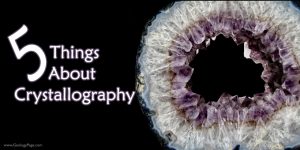
1. 2014 – was the UNESCO Year of Crystallography.
The father and son combination of father William Henry Bragg and son William Lawrence Bragg first revealed the structure of salt and won the Nobel Prize in Physics in 1915 for their services ‘in the analysis of crystal structure by means of X-ray’. To date, the Braggs are the only father and son team to receive a Nobel Prize. In fact, Crystallography is the science or discipline directly attributable to winning the most Nobel Prizes, taking the award 28 times.
2. Around 90 per cent of all drugs are actually crystals.
That’s because it’s much easier to control the solid state of a crystalline structure – even if you’re using a gel, that would involve crystals that are suspended in a gooey substance to aid the delivery of the drug involved. Some drugs that are injected would also be comprised of small crystals as crystalline materials can be arranged in different ways, under different conditions, to create the required effect.
If you take a tablet, it has to dissolve in your gut and get across the gut wall into the bloodstream. How the crystals in the drugs are composed will define how readily they will dissolve in your gut. If you get the wrong form, the drug might go all the way through the body, or dissolve in the wrong place and be useless.
3. Did you know that quite a lot of the human body is made of crystals?
For example, most of the rods and cones in your eye that conduct the light or form an image are made of crystals. Around 65 per cent of the bone mass of an adult is made of hydroxyapatite crystal.
4. Another thing to consider, especially during the seasonal period, is that chocolate is crystalline.
The National X-ray Crystallography Service at Southampton has done a number of experiments on the crystalline structures of chocolate. The cocoa butter added controls the crystallinity and that is important because there are six different crystalline forms of chocolate. Perhaps surprisingly, the one that most chocolate wants to be – the most stable form – is the nasty one with the white coating on the top that nobody likes the taste of, but that’s what chocolate ultimately wants to be.
If you play around with the amount of cocoa butter, that affects the crystalline nature of the chocolate and that’s how you get different forms, tastes and textures and, hopefully, will direct you to the form of chocolate that everybody knows and loves.
5. Many people will be enjoying fireworks over the holiday period, but did you know that explosives are all crystals?
Here in Southampton, we have developed a new class of solid compound that means that you would no longer need to mix powders to create fireworks, much as the Chinese were doing centuries ago. The problem with explosive powders, or other substances like nitro-glycerine, is their volatility. However, if they were to be created in a more stable solid state, they would be safer to transport and easier to control.
One answer we have discovered is to move towards a different kind of high-energy material by growing crystals with firework-type properties in a scaffold or lattice-like structure, which stays stable and features channels and voids where you can put things like different dyes to create different colours. You could even put nitro-glycerine within such a structure and it would stay stable for as long as you like.
The applications for this kind of firework are not just for entertainment or defence. The airbags in our cars are also initiated by energetic materials that are all mini fireworks, so there are many civilian applications for these crystals as well.
Note: The above post is reprinted from materials provided by University of Southampton.










